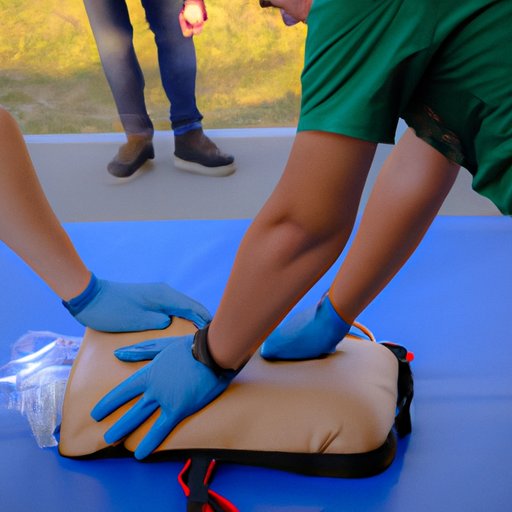Introduction
Emergency Medical Technicians (EMTs) are essential healthcare workers who provide pre-hospital care to those in need. Their job is to quickly assess and treat patients with medical emergencies and transport them to a hospital or other medical facility. Becoming an EMT requires specialized training and certification, but it is a rewarding career that can make a positive impact on people’s lives.
Research the Requirements for Becoming an EMT in Your Area
The first step in becoming an EMT is to research the requirements in your area. Different states and localities may have different regulations, so it’s important to check what is required in your area. You should also determine which certifications you will need to become an EMT. In some cases, you may need to be certified in CPR and First Aid before you can begin an EMT training program.

Take a CPR and First Aid Course
Taking a CPR and First Aid course is essential for any aspiring EMT. These courses teach basic lifesaving techniques such as how to perform CPR, administer first aid, and use an AED. They also provide an understanding of emergency situations and how to respond appropriately. Completing a CPR and First Aid course is usually a requirement for EMT certification.

Complete an EMT Training Program
Once you have completed a CPR and First Aid course, you can begin an EMT training program. It is important to find an approved program that meets the requirements of your state or locality. Programs vary in length, but they typically include both classroom learning and hands-on experience. During the program, you will learn how to assess patients, provide pre-hospital care, and safely transport them to a medical facility.
Become Certified by Taking the National Registry of Emergency Medical Technicians (NREMT) Exam
After completing an EMT training program, you must take the National Registry of Emergency Medical Technicians (NREMT) exam to become certified. The exam consists of multiple choice questions and tests your knowledge of the skills and concepts taught in the program. To prepare for the exam, review the study materials provided by the NREMT and take practice exams to ensure you are ready for the real test.
Develop Strong Communication, Critical Thinking and Problem Solving Skills
As an EMT, it is important to have strong communication, critical thinking, and problem solving skills. Active listening is key to understanding patients’ needs and responding to their questions and concerns. You must also be able to think quickly and create solutions to problems in emergency situations. Developing these skills takes time and practice, but they are essential for being an effective EMT.
Gain Experience Through Volunteer Work or Internships
Gaining experience as an EMT is important for getting a job and advancing your career. There are many opportunities to volunteer or intern in the field, such as at a hospital, fire department, or ambulance service. Utilize online resources and your network to find these opportunities and make connections in the industry.

Maintain Certification With Continuing Education Credits
In order to stay certified as an EMT, you must complete continuing education credits each year. Research the requirements for your state or locality and take relevant courses or workshops to maintain your certification. This will ensure that you stay up to date on the latest practices and procedures in the field.
Conclusion
Becoming an EMT is a rewarding career that can make a positive difference in people’s lives. The process involves researching the requirements for your area, taking a CPR and First Aid course, completing an EMT training program, passing the NREMT exam, developing strong communication, critical thinking, and problem solving skills, gaining experience through volunteer work or internships, and maintaining certification with continuing education credits. By following these steps, you can become a certified Emergency Medical Technician and serve your community.
(Note: Is this article not meeting your expectations? Do you have knowledge or insights to share? Unlock new opportunities and expand your reach by joining our authors team. Click Registration to join us and share your expertise with our readers.)
